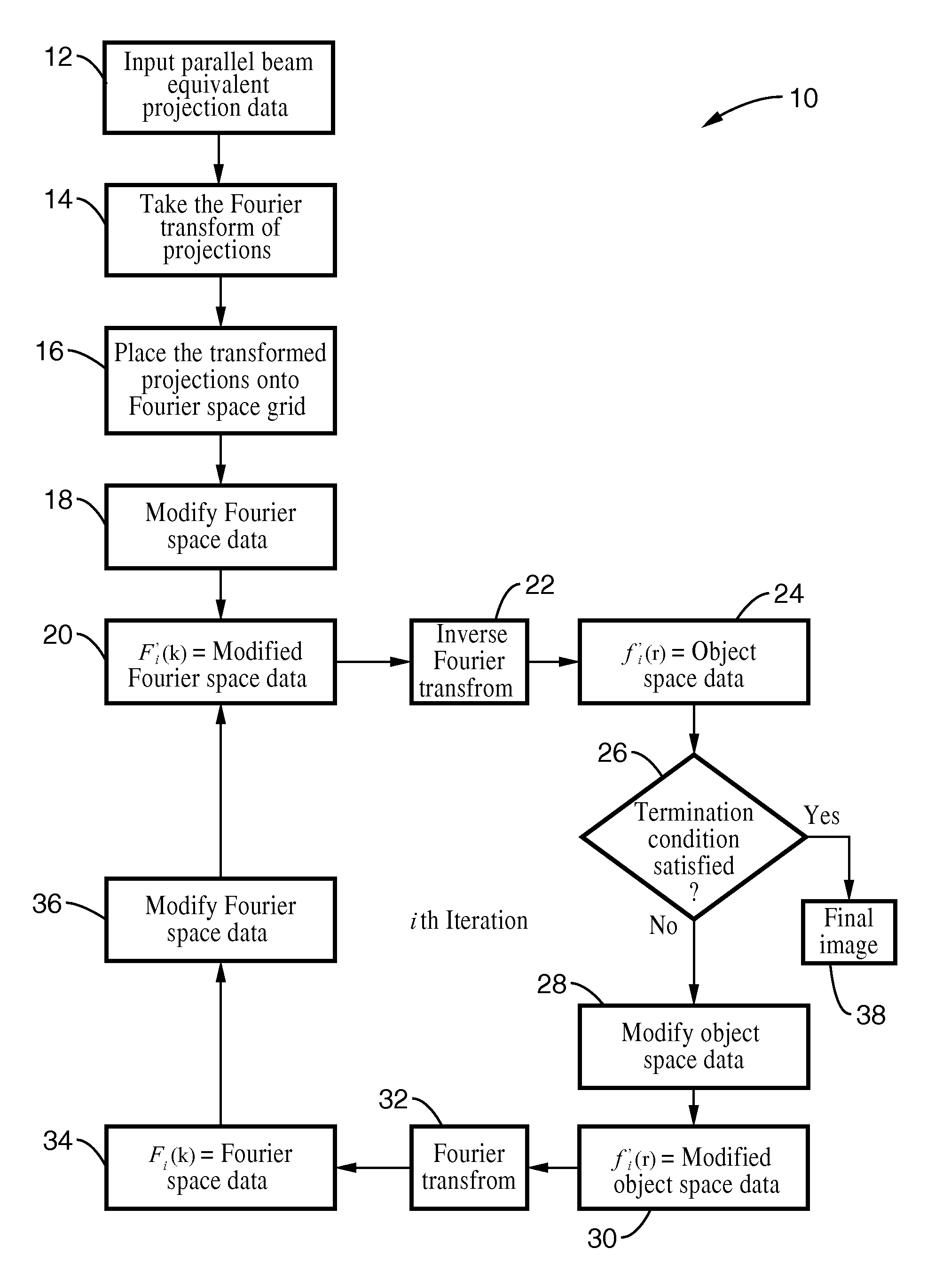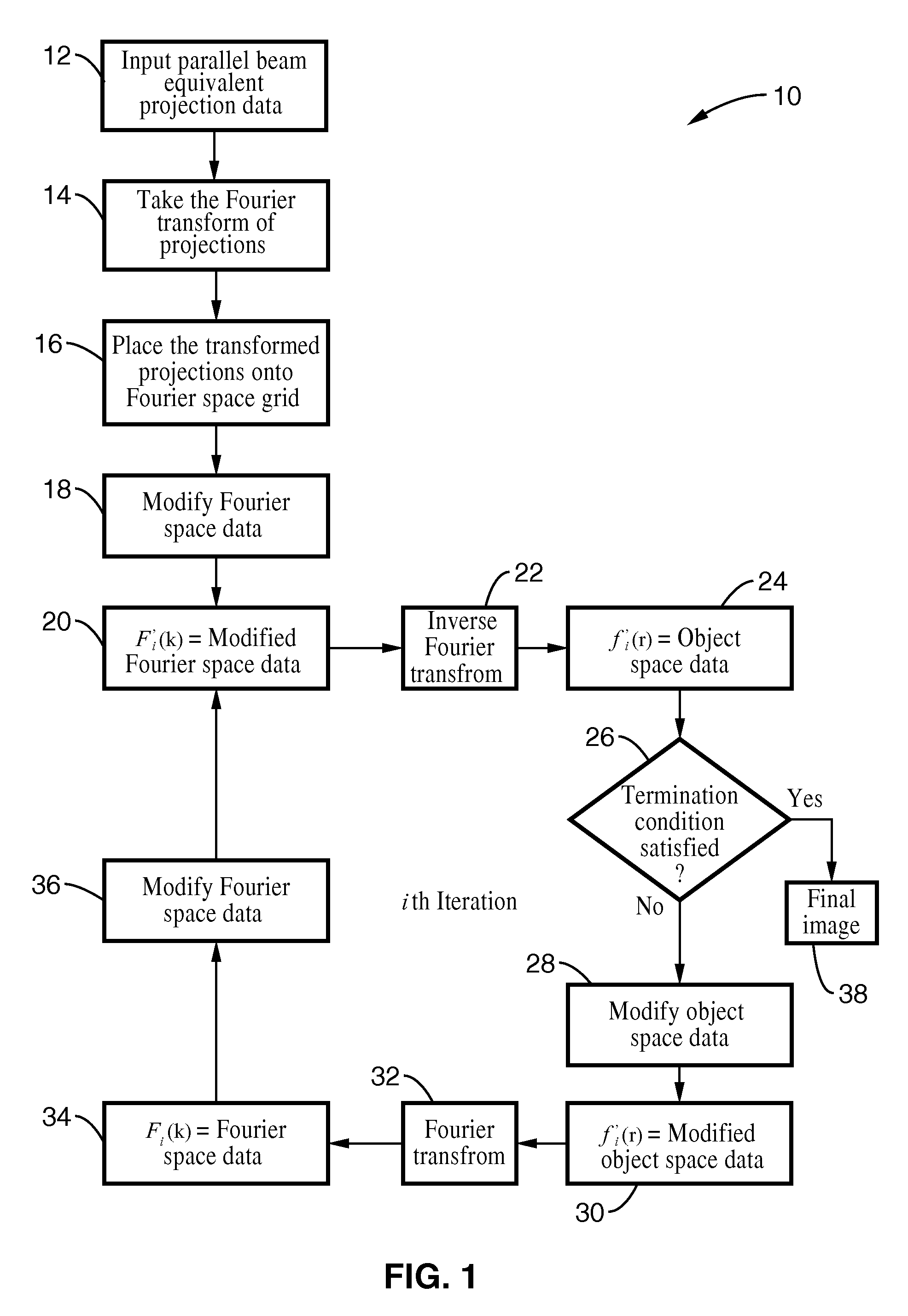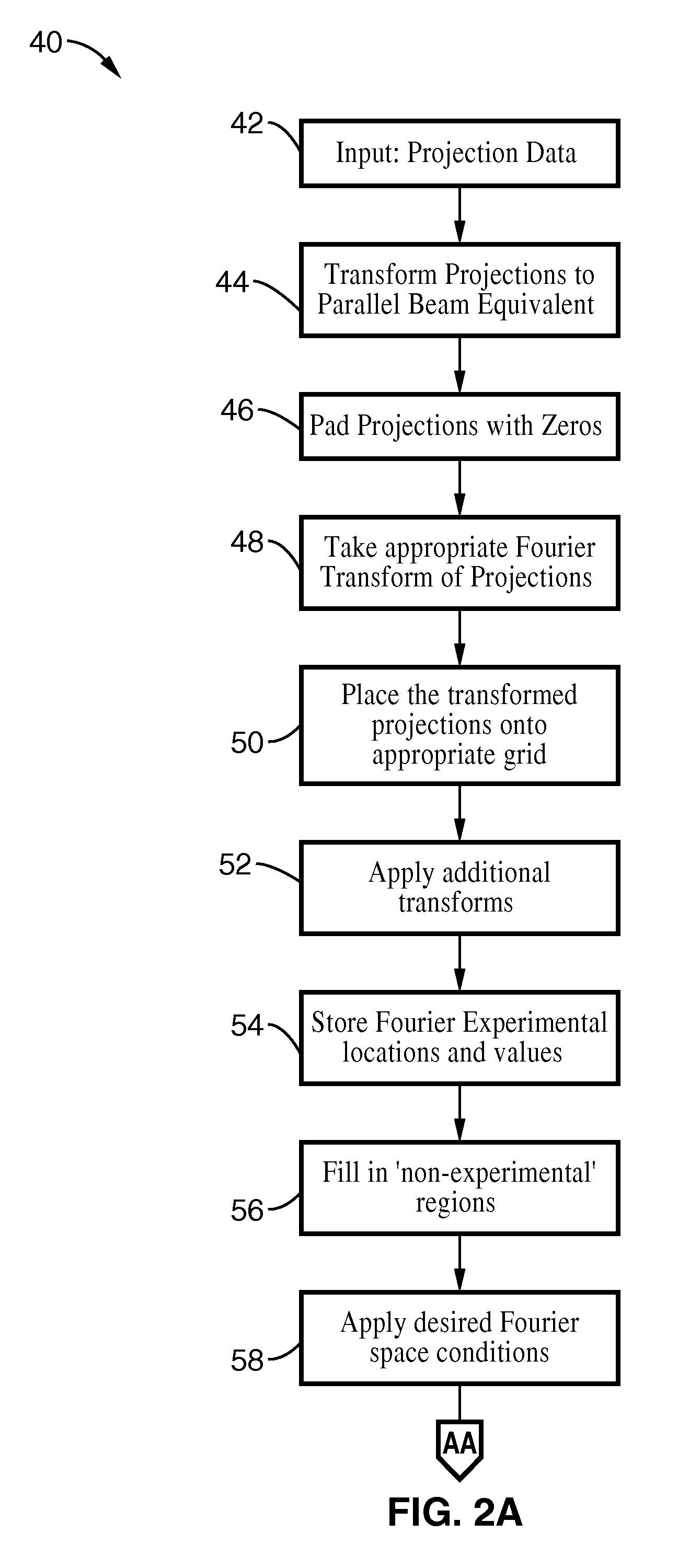Iterative methods for dose reduction and image enhancement in tomography
a tomography and image enhancement technology, applied in image enhancement, instruments, applications, etc., can solve the problems of reducing resolution, missing projection data, and projections that can be acquired in the typical, so as to reduce radiation flux, reduce the number of projections, and reduce the dose
- Summary
- Abstract
- Description
- Claims
- Application Information
AI Technical Summary
Benefits of technology
Problems solved by technology
Method used
Image
Examples
example 1
[0116]In order to demonstrate the functionality of the invention, the pseudopolar embodiment of the invention was applied to a 3D image experimental reconstruction of hemocyanin molecules. The hemocyanin molecule consists of a double-layered and hollow barrel complex about 30 nm in diameter and 35 nm in length. A data set was acquired by tilting the specimen from −69.4° to +69.4° with a total of 105 projections. Image reconstruction was carried out using the said method and the conventional method of FBP. The projection data from the imager was padded with zeros, Fourier transformed, placed onto a pseudopolar grid, and translated through the iterative process as described by the solid arrow loop of the diagram of FIG. 3. A positivity constraint was used in object space. In Fourier space, the data was updated and was made to conform to the experimental data. To perform a quantitative comparison, 11 individual hemocyanin molecules of the two reconstructions were chosen. The particles ...
example 2
[0117]To demonstrate the adaptability of the methods of the invention, images of HIV-1 virus-like particles (VLPs) were reconstructed. The subject particles were plunge-frozen onto EM grids and imaged in a 300 kV FEG TEM. The tilt angles ranged from −70° to +70° with a fixed angular increment of 1°. The 3D structure of a HIV-1 VLP was reconstructed by using conventional methods for purposes of comparison with images produced by the present invention. Referring now to FIG. 5A through FIG. 5D, image reconstruction of the HIV-1 like particle from cryo-EM data is shown. FIG. 6 (A) and FIG. 6(B) show sectioned images in the XY and YZ plane with 15-slice averaging and no denoising. The inset shows some of the gold fiducial markers reconstructed by conventional methods.
[0118]The same data set was reconstructed by the pseudopolar embodiment of the present invention. Since the tilt series has a fixed angular increment, it was possible to calculate each equally sloped tilt from the neighborin...
PUM
 Login to View More
Login to View More Abstract
Description
Claims
Application Information
 Login to View More
Login to View More - R&D
- Intellectual Property
- Life Sciences
- Materials
- Tech Scout
- Unparalleled Data Quality
- Higher Quality Content
- 60% Fewer Hallucinations
Browse by: Latest US Patents, China's latest patents, Technical Efficacy Thesaurus, Application Domain, Technology Topic, Popular Technical Reports.
© 2025 PatSnap. All rights reserved.Legal|Privacy policy|Modern Slavery Act Transparency Statement|Sitemap|About US| Contact US: help@patsnap.com



